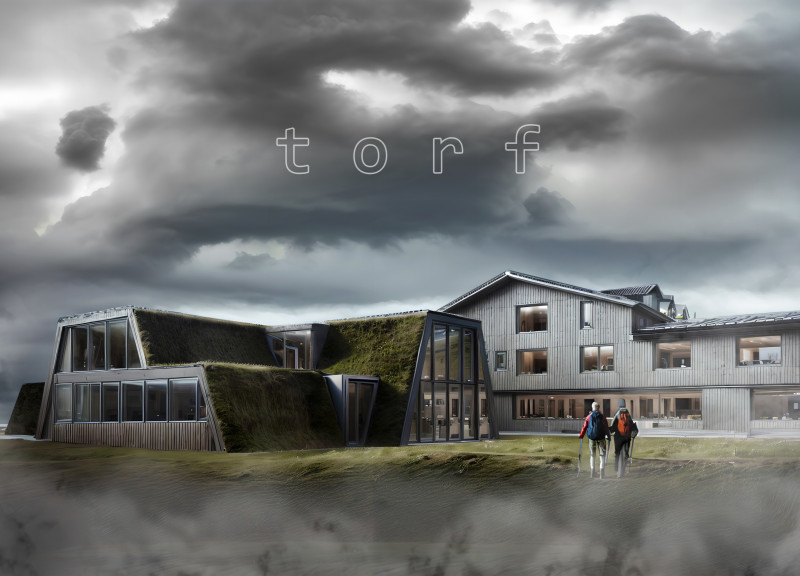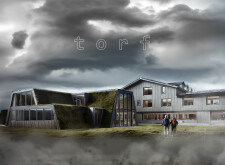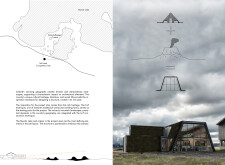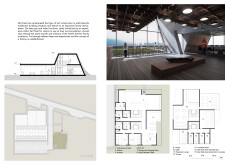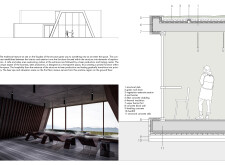5 key facts about this project
## Architectural Analysis Report: Sel Hotel
### Project Overview
Located near Myvatn Lake in Iceland, the Sel Hotel draws upon the region's dramatic landscapes and geological features, such as volcanic craters and rich vegetation. The design integrates traditional Icelandic building techniques, particularly turf architecture, with contemporary elements, crafting a structure that harmonizes with the local cultural and environmental context. The intention is to create a family-run establishment that provides both warmth and an immersive hospitality experience.
### Architecture and Massing
The building features a series of interconnected volumes that align with the contours of the landscape, minimizing visual impact while enhancing thermal performance. Green roofs, a hallmark of traditional construction, serve to blend the structure into its surroundings. The sloped roofs create dynamic forms that echo the natural shapes found in the Icelandic environment, contributing to a cohesive architectural expression.
### Material Selection and Sustainability
The project employs materials selected for their sustainability and relevance to local traditions. Wood cladding provides a visual and tactile connection to Icelandic vernacular architecture. Fiber concrete is used for structural elements, ensuring durability and aesthetic coherence. The incorporation of extensive sedum on the green roofs not only enhances insulation but also promotes biodiversity. Concrete block serves as a robust structural foundation, complementing internal finishes that optimize energy efficiency through thermal insulation and vapor barriers.
Sustainability is further highlighted through various design strategies, including green roofs that mitigate stormwater runoff while offering insulation. The passive solar design maximizes natural light, reducing energy demands. Integrated water and waste management systems reflect a commitment to eco-friendly practices.
### User Experience and Community Integration
The interior layout is designed to enhance the guest experience through thoughtfully organized spaces. Accommodations provide modern, cozy environments with views of the surrounding landscape. Public areas, such as cafés, a brewery, and therapeutic spaces, offer local cultural experiences, fostering a sense of community among guests. Wellness areas invite relaxation, utilizing expansive windows and open layouts to create a connection with nature. A brewery facility not only adds a unique focal point but also encourages guests to engage with local brewing traditions, enhancing the overall experience with educational opportunities.


